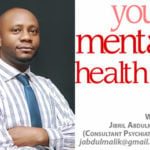
Three things sustain life and we can’t really do without them. They are summed up in the mnemonic (memory aid) – LAW.
Before lawyers start beating their chest thinking that they are indispensable despite the amount of grief they have caused us over the faulty constitution, let me quickly explain that LAW stands for Light, Air and Water. Take anyone of these away from our world and everything comes to nought!
We all take light for granted. Its source is the sun. Light is not just for seeing. Light is life! Without the sun’s brightness, we cannot live on this planet. It is the sun’s light that allows our water to stay liquid and plants to grow and produce oxygen for the air we breathe. The less bright the sun, the less heat we have. Similarly the brighter the sun, the more heat it produces.
Our days are guided by the amount of sunlight that is available. So, when we talk about “day” or “night” we are actually talking about the brightness of the sun at these periods.
If we have sunlight 24 hours a day, PHCN, with its intermittent power failure, would have less impact on our activities. We all know how miserable we are at night when we have to walk in the dark alleys or we have important assignments that involve reading. Young people have had battles with NEPA (now PHCN) because of the disruption to their favourite football matches.
How much light do we need? We all know that too much light can be hurtful to the eye. The easiest way to go blind is to look at the bright sun. It will burn the macula instantaneously.
The macula is that part of the inner coat of the eye used for seeing details. Looking at the sun even on a cloudy day or when there is an eclipse of the sun, could cause severe irreversible damage to the macula leading to blindness. A similar damage can occur in welders who fail to wear protective goggles when welding.
Should we then wear dark glasses to protect our eyes against the “harsh” effects of sunlight? The visible rays of the sun are no problem. The invisible rays such as the ultraviolet (UV) rays are the injurious ones. Sunglasses glasses with UV ray filter would block these and protect the eyes from their harmful consequences.
UV rays are known to induce the growth of pterygium and hasten the development of cataract. Pterygium is a fleshy growth in the medial part of the eye often seen in the tropics.
Tinted glasses, whether grey, brown, blue or green, make no difference to the amount of UV light reaching our eyes. All they do is to affect how we see colour less than other tints do. Dark sunglasses are no more effective at protecting our eyes than light ones. UV protection is completely independent of both colour and colour density.
Does reading in dim light really hurt our eyes? There is no truth in this myth. Reading in low light does not damage the eyes, but rather may cause eye strain. Similarly, sitting too close to the TV or watching TV in a dark room cannot damage the eye but can cause eye strain and fatigue.
It is recommended that you watch TV in a well-lit room in order to prevent unnecessary fatigue to your eyes.
How much light is adequate for reading? Light is measured in lumens. The ideal level of light for reading ranges from 1700 to 2800 lumens. A typical 100-watt bulb produces 1740 lumens. Let me restate again that reading in different types of light will not damage your eyes. At the worst, you may have some eyestrain.
The best setting for reading is a regular incandescent bulb above and slightly behind your head at a level significantly higher than the reading material which should be 35 to 45cm away from your eyes. There should also be no extra light in your field of vision.





